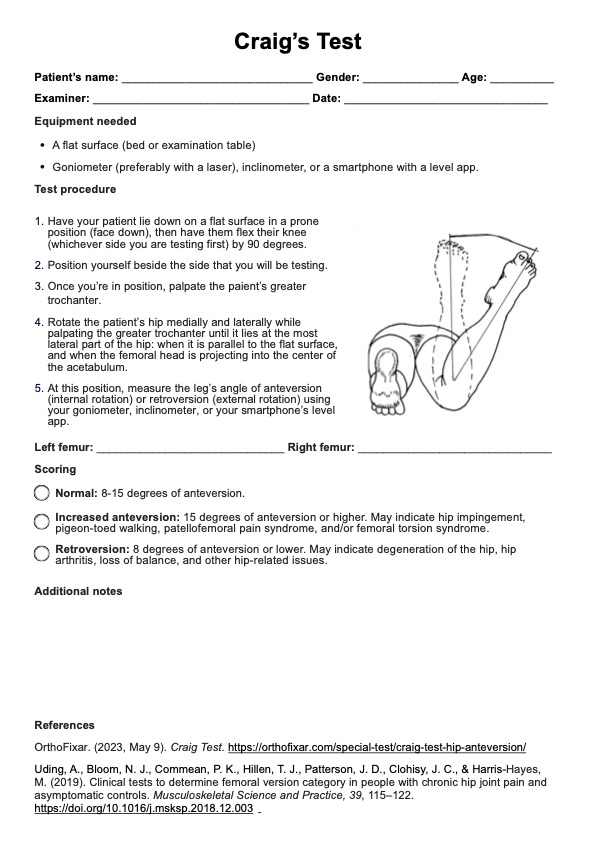The also known as Craig's Test, also known as the femoral anteversion test or the trochanteric prominence angle test, assesses the angle of the femoral neck to determine if there is excessive internal rotation. It involves rotating the patient’s hip while palpating the greater trochanter to measure anteversion accurately.

Craig’s Test
Efficiently and consistently assess femoral anteversion and identify hip issues with our free printable Craig's Test template.
Craig’s Test Template
Commonly asked questions
The normal range for Craig's Test is 8 to 15 degrees of internal rotation. A decreased external rotation, meaning an angle below 8 degrees, indicates retroversion, which may suggest hip degeneration or instability.
To test for tibial torsion, the examiner measures the angle between the knee and ankle when the patient sits with their legs hanging off the edge of an examination table. A goniometer or an inclinometer is typically used to determine the degree of torsion.
EHR and practice management software
Get started for free
*No credit card required
Free
$0/usd
Unlimited clients
Telehealth
1GB of storage
Client portal text
Automated billing and online payments











